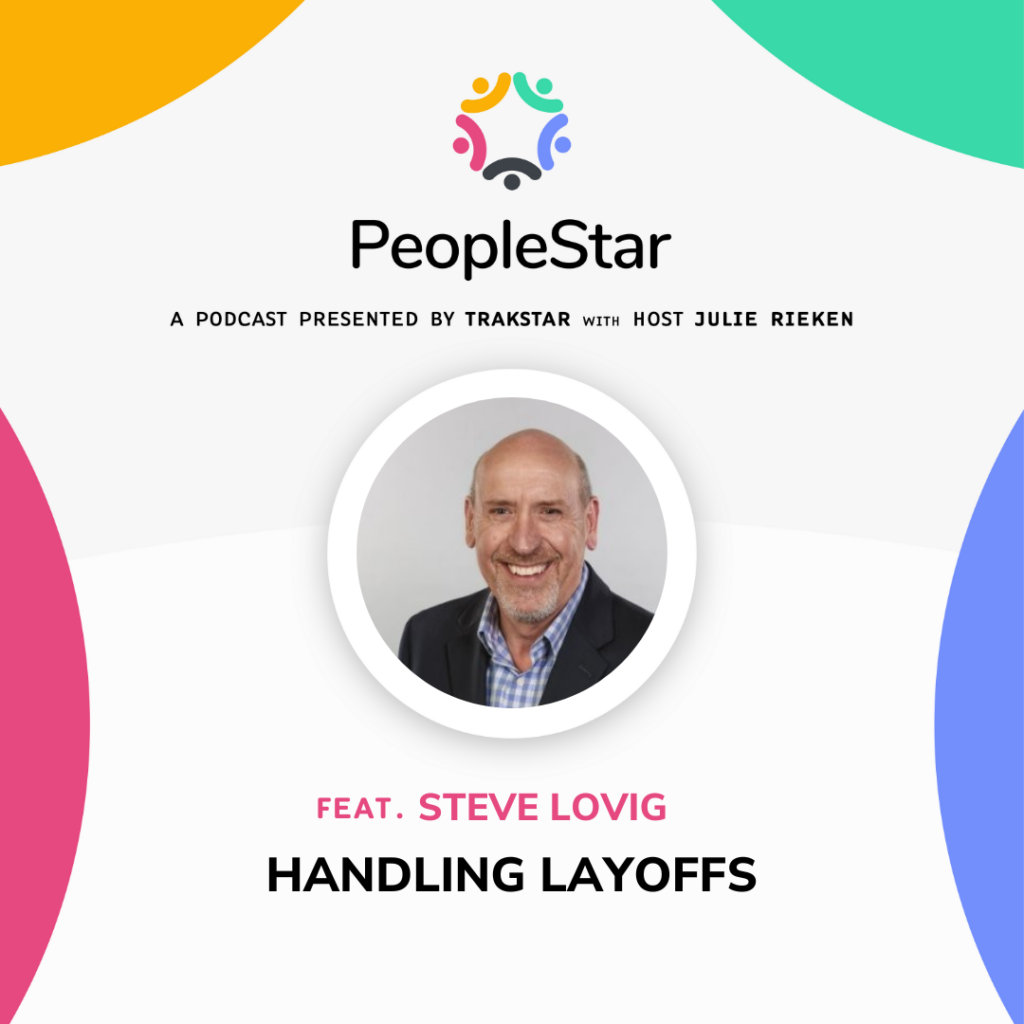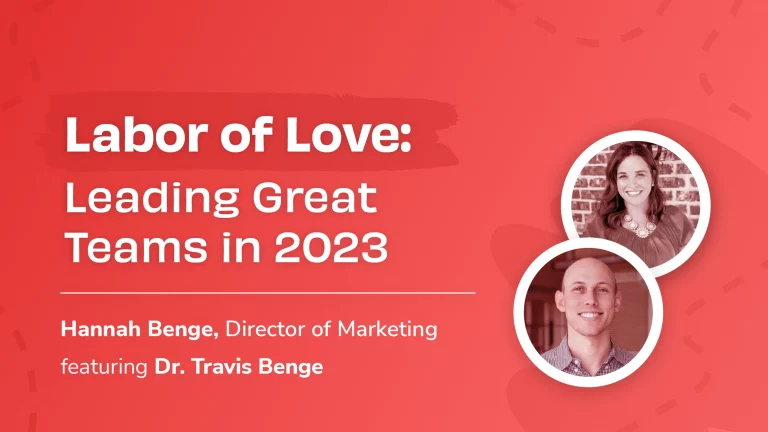PeopleStar_Steve Lovig: this mp3 audio file was automatically transcribed by Sonix with the best speech-to-text algorithms. This transcript may contain errors.
PeopleStar Intro/Outro:
Welcome to the PeopleStar Podcast. We deliver leadership perspectives from industry experts on their people, architecture, routines, and culture as they solve HR's newest challenges. And now your host, Julie Rieken.
Julie Rieken:
Hello podcast listeners. Julie Rieken, host of PeopleStar Podcast. We have a fascinating conversation today. I have someone with a lot of experience in HR. His name is Steve Lovig. He is the director of HR for Homestar Financial, which is a 21-year-old mortgage company based out of Gainesville, Georgia, which is just north of Atlanta. Steve has a ton of experience in HR, and we are going to have a great conversation today. Steve, I'm thrilled to welcome you as a guest. Welcome.
Steve Lovig:
Thank you. That's a lot of pressure to be good here, I'll do my best. I really appreciate it.
Julie Rieken:
Of course, this is going to be fun. I'd like for you just to give a few sentences of your background here, Steve. Tell the audience a little bit about your role and a little bit about your history, and, so they can kind of place you and understand the kind of experience that you bring to HR.
Steve Lovig:
Okay, sure, been with Homestar Financial Corporation now for a little over seven years as their head of human resources, and in that role, I'm the executive in charge of all things people, we like to say, we don't call ourselves the people team, but we do think about it that way. So if it involves the people, we're in charge of it, or we can at least help with that. So whether that's onboarding, or benefits, or performance management, offboarding, helping people through difficult times in their lives, whatever that may be, the HR team is there to support our organization. I mentioned being there for about seven years. Before this company, I was with a group of career colleges and schools. Last place was a company based out of Texas, before that, an organization that was based out of Atlanta, and that was really enjoyable, learning about the career colleges, the for-profit colleges and schools that are across our country, and not everybody's college-bound, four-year traditional college-bound, so I think those are really important. Started my HR career at GE Capital after finishing out my college career as a nontraditional student because I also had a career in radio. So did that for a while and decided that I should get a college degree at one point in my life. So that's where I am today.
Julie Rieken:
Okay, fascinating, so a voice for radio, you're in the right spot. We are going to enjoy today, this is great. Steve, you mentioned a couple of things that you've got experience in, and I'm thinking, want to maybe make a match here, a connection? You're with Homestar Financial, this morning, I think I heard on NPR that the Fed has raised interest rates eight times in the last year, and there's still a lot of work to be done to resolve some inflation and whatnot, and this whole economic turmoil has meant a lot of things for companies across the US. I mean, I'll name one: Twitter, we all know that there's been a lot of layoffs there, and that's been a challenge. There's been some large online retailers, social media orgs, names where, household names that were very familiar with that have had some challenges in the last year navigating a lot of this economic disruption. And you mentioned offboarding, and I think this is a space we've never talked about on PeopleStar, but I would imagine that in your history, you've experienced things like this. And I just want to talk about, talk to you about, have you experienced in your history economic disruptions where companies have had to react and maybe off-board, reduce, and deal with some things during turbulent times? Is this something you've experienced?
Steve Lovig:
Yeah, both from external forces and from, in a previous company, internal forces that caused the company to shrink, it needed to shrink. And one of the things that I started thinking about those many years ago and still think about today, as you said, Julie, reading the online posts and hearing news, lots of places having layoffs, not just the big companies, so midsize smaller companies are going through this. And it's so important that you go in with determination to treat the employee that is being laid off with dignity and respect. At the end of the day, when they're walking out the door, they're going to feel devastated. The one thing you can make sure that they walk out the door with is that their dignity is still intact. It's often, most times with layoffs, no fault of their own that they're losing their job. So if you start there and you think, well, okay, what does that mean? What can I do for someone that is being let go? And it starts with how you communicate with those individuals. You talked about hearing these other companies, we also are hearing that people are getting terminated via email or a zoom call where there are a thousand people on the call, and they find out that since you're on this call, that means your job is going away today. Well, in the organizations that I've been involved with, they have either been disparate organizations or people are just working remotely, and like in today's world, so many of us are, and you've got to figure out a way, if you don't have people face to face, how are you going to with dignity and respect, let that person go, tell them that their job is going away. With video calls now, you can make it almost as personal as that one-on-one face-to-face. But, you know, you've got to have the manager, the person that is with that employee day in and day out that knows that employee, that manager has got to be the one that's telling the employee that due to business circumstances, due to cost-cutting, we are having to make some changes, including layoffs, and unfortunately, today I'm telling you that your role is one that is impacted, and today is your last day with the company.
Julie Rieken:
Steve, this is really, this is a tough conversation, but such an important one because you're right, that moment of that call, it's devastating for a person, and their dignity and respect needs to be intact. Can you, can we talk HR's role in building a framework and communication strategy that is helpful? What, when you think about this communication, you mentioned the manager one-on-one, but there's other communications that need to take place. What do those communications look like? It's not just the manager one-on-one. How have you, or what have you seen that's helpful in terms of the broader communication? How does that look?
Steve Lovig:
When I think about where we would start with this is, first, tell your managers about it, so that they're not caught off guard with, hey, later on today, you're going to be terminating five of the people on your team, right? You start with, hey, we're going to have to make the difficult decision of layoffs. And for example, we've had this situation in the past where we've said we need to cut by 10% our salaries per department. So managers be thinking about what that might look like. Who on your team would be the least impactful for your team and the organization, that role, to lose? And you're going to be hearing from your HR business partner here in the next day or two, we're going to work through that list of people, and we're going to make sure that there are no demographic or other kind of discrepancies, we want to make sure that we're not laying off this classification of individual, for example, versus another. We want to make sure that there are specific reasons why we're choosing one person over another. And sometimes it can be that it's last in, first out. I don't like that term, makes it very cold, but the people that have the least tenure with the organization could often be the first ones that you consider letting go in a layoff situation. So you want to talk to the managers about that, and then you want to make sure that you're, whether it's you individually as the HR person for a small organization or if you've got a team of HR professionals, then it's, what will the HR team be saying to that employee? In addition to making sure your HR team knows exactly what they're going to be saying, you want to make sure that your managers know exactly what they're going to be saying. In my situation, I have actually put together talking points. It's half a page, 4 or 5 bullet points of, I need you to say this and this to these individuals. And typically, the way I've structured it, the manager is the one that is communicating to the employee that, here's what's happening in the organization. Because of that, today is going to be your last day. There's, there are a lot of items that Human Resources wants you to be aware of, and that's why Steve is here with me, and I'm going to let him take the call from here. And the human resources business partner, HR Rep, will go through their talking points again, something that's created ahead of time. Don't try and ad-lib these kinds of conversations.
Julie Rieken:
Steve, that is really critical, this idea of HR helping write a script. This is a stressful moment for both sides, I can't imagine entering this conversation without some talking points. Sounds like that's a practice that you do at the manager level, for sure. Are there any other places where you've thought about, or organizations should think about scripting a message?
Steve Lovig:
Absolutely, when that layoff process, it may take 2 or 3 hours, depending on the volume, but once that is finished, then the company needs to make an announcement. And from my perspective, what I've done before is have that at the departmental level where the department manager, again, the person that is day-to-day talking with the employees, that person is speaking from the talking points delivered by HR, Here's what happened today, here's what the next steps are, here's where I need your focus to be, and then I've also put together a list of FAQs. Here are some questions that would be typical for you to hear from your employees, and here are answers. For example, what if somebody calls me for a reference check? That's an easy one, send them to HR. HR, being a process, we'll take care of that. What if somebody calls from the media? Real simple, send them to our department manager that handles those things, right? So you've got those specific things in there that hopefully won't catch anybody off guard. At the end of the day, the way to really ensure that it's not, that people don't get caught off guard is, if you get asked a question that you don't know the answer to because I haven't given you the answer in advance, send that person to the head of HR. In my case, could be that HR business partner that you deal with, whoever that may be.
Julie Rieken:
Steve, what if a department wasn't affected by this? What if you have like, what about organizations where, I'm sorry, Twitter, I'm thinking about departments that are, that were retained and departments that weren't. What if you're a part of a department that wasn't? How should an organization think about communications in that circumstance? It affected other departments but not mine or not theirs.
Steve Lovig:
Yeah, great point. They should, that department manager should also have an all-department, all-employee meeting, phone call if they're remote, and talk about the same thing that the other departments are talking about. It's hey, here's what happened in the company today. Unfortunately, some people you may know very well, maybe some friends of yours, lost their job today. Here's what I want you to know about it, and here's how we're going to move forward. Your job is not impacted today. In fact, no one on our department was impacted today. That's the good news there. The bad news, other departments were impacted. So responses from those departments may be a little slower than usual, for example. Those sorts of, well, what does that mean for us as a company kind of decisions?
Julie Rieken:
All right, let's, last thing I'd like to talk about here, I think, is when you think about that employee who's been affected, and again, this is just such a broad thing that I'm reading and seeing in the news every day. When you think about that employee whose job was affected, how, and you think about dignity and respect, you've had a good convo, the managers were aware, people weren't cut off, all of those things in terms of the communication strategy are critical. What about the economic strategy? What do they leave within their hand? What is the checklist of things that a company can send them on their way with that can help them find their next position? What does that look like? What do you think are the right elements to include in that?
Steve Lovig:
A checklist is a great term, we actually give the employees via email, because most of them are not face-to-face in the organizations where I've had the layoffs in the past. So you tell the employee what they're going to be getting in an email and to please watch out for that email. In that email, typically, there's going to be a separation document, that is a legal document. It's probably, there's some separation pay that's going to be explained in there. You want to explain any extraneous if there's vacation or PTO that's going to be paid out, how long is that separation pay. We've even gone to the extent of saying exactly on this pay date is when you will see that money, a check. And then put yourself in their shoes, all of a sudden they don't have an income, they don't have a job. What are they afraid of? Well, they're afraid of not having money, oftentimes, right off the bat. So make sure they know how to file for unemployment. Every state is different, so wherever that employee is living is where they're going to file for unemployment. So provide that information to them, a phone number and email, a web link, a URL, and make sure that they know that they should file for unemployment. One thing that's, I like to say from an HR perspective, is that we can't say whether or not you're going to get unemployment compensation. That's a state-by-state decision, but the company is encouraging you to go ahead and file. Budget tools, there are lots of free budget tools online that people can get. Make sure they know about the free budget tools, give them information about how to contact the 401k, or other retirements that the company may make available to employees. Talk to employees or at least make it, put it out there to these exiting employees, there's an HR team here at our organization, we know a lot about hiring people, so why don't you let us help you update your resume? Why don't you let us help you with a LinkedIn profile refresh? Maybe it's been a while since you've been in an interview. Hey, we'll set up some role-playing and do some interview training for you. We can give you examples of questions to look out for as you start interviewing. So the idea is that instead of having this exiting employee sit in that terrible moment of I don't have a job anymore, it's getting them thinking about the next step. How do I move forward in my career? How do I get a job and get some income and take care of myself, my family, make car payments, whatever that case may be? I saw, I wish I'd thought of this, I saw a CEO had actually announced on LinkedIn that he had to lay off some employees, and he commented on some individual skill sets that these people have and invited someone else that might be looking for, looking to hire some folks. They said, contact me directly. I want to talk to you about these individuals that I just had to let go.
Julie Rieken:
This has been such a great conversation, Steve. I think one of the things that I really, that comes across from you, is the level of empathy, of understanding where that person's coming from. And in tough times, what are the things that we can do as leaders, employers, if organizations are faced with tough choices, how do we preserve dignity and respect and do our very best to help the person find their next step. And I hope this isn't affecting any of our listening audience. However, if it is, or if you know of an organization or an HR person faced with this, I hope that today you got some fantastic ideas for frameworks, for communication, and checklists of things to help people through this. So, Steve, thank you.
Steve Lovig:
Yes, thank you, Julie.
PeopleStar Intro/Outro:
Thanks for listening to the PeopleStar Podcast. For the show notes, transcript, resources, and more ways to get a seat at the table, visit us at TrakStar.com/Podcast.
Sonix has many features that you’d love including automatic transcription software, automated translation, automated subtitles, transcribe multiple languages, and easily transcribe your Zoom meetings. Try Sonix for free today.




